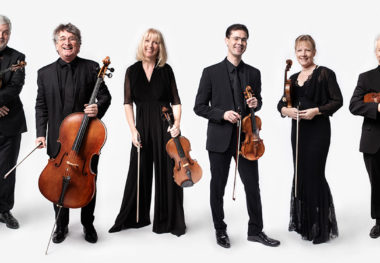
On Saturday night, members of the Academy of St. Martin in the Fields Chamber Ensemble performed works by Brahms, Beamish and Mendelssohn.
The concert opened with the dense and intensely personal String Sextet No. 2 in G Major, Op. 36 by Brahms. The piece is scored for two violins, two violas and two celli. Brahms composed the piece after one of his many doomed relationships, this time with Agathe von Siebold with whom he had become secretly engaged. But as with his many other many unrequited loves, Brahms could not in the end go through with a commitment. He did, however, sublimate his feelings — of both love and desire, as well as sadness and regret — into his music. As his friends knew, Brahms often made cryptic references in his compositions to the women in his life. In the first movement of the G major string sextet, there is a concealed reference to Agathe with a phrase (repeated three times) containing the notes A-G-A-H- E (H is the German B natural). And the music expresses the anguish and longing he felt for Agathe.
The first half concluded with the Partita for String Octet by Sally Beamish, a piece commissioned by the Academy of St. Martin in the Fields and which had its world premiere in Columbus, Georgia, on Oct. 4, 2019. Beamish, who wrote the program notes for this performance, explains that the Partita was inspired initially by the Bach solo sonatas and partitas for violin, and in addition to Bach’s D minor Sonata, includes references to Handel and Mendelssohn. Thus, while distinctly modern in conception, it nevertheless harkens back to much older themes. Even the structure — a Prelude, Fugue and Chaconne — pays homage to Bach and Handel. Of course, both Brahms and Mendelssohn were strongly influenced by both Baroque composers, which ties together all three pieces on the program. In the Partita, Beamish gives the listener a thoroughly accessible contemporary lens through which to look at older forms.
The second half was devoted to one work, the exuberant and thrilling String Octet in E-flat major, Op. 20 by Mendelssohn. He famously wrote this masterpiece when he was 16, the year before he wrote another youthful masterpiece, the Overture to “A Midsummer Night’s Dream,” Op. 21. In his preface to the score, Mendelssohn wrote, “This Octet must be played by all instruments in symphonic orchestral style,” stressing that Mendelssohn conceived the Octet more as an orchestral than a chamber music work. Although Mendelssohn intended for all the instruments to play in orchestral style, the Octet is more like a violin concerto than a symphony, with the first violin getting the spotlight. This is not surprising as Mendelssohn wrote the Octet as a birthday gift for his violin teacher, Eduard Ritz.
Now to the performance. The Ensemble tackled all the pieces with a richness and vigor that could only be achieved by musicians who have played together for decades. The Brahms simply dripped with lushness, and the musicians moved seamlessly from the seriousness of the first three movements to the more upbeat feel of the finale.
The Ensemble owns the Beamish literally and figuratively. What better way to hear a new piece than by the group for which it was written, especially when that group is the Chamber Ensemble of the Academy of St Martin in the Fields. The audience was very receptive and showed the composer, who stood to take a bow at the conclusion, their appreciation and affirmation of her work.
But, as they say, the musicians saved the best for last. Not that the Mendelssohn is the best composition of the three, but the musicians let out all the stops. They took Mendelssohn’s instructions to heart and played orchestrally, which, of course, they are used to doing in the larger chamber orchestra. They took the energy and youthfulness of the Octet up a notch and gave an exhilarating performance that drew cheers and whistles from the adoring audience. The Ensemble then returned to the stage to perform an encore of Greig’s “The Last Spring” from his Two Elegiac Melodies Op. 34. After the wild ride of the Mendelssohn Octet, the Chamber Ensemble left the audience soothed and satisfied.
The players of the Chamber Ensemble of the Academy of St. Martin in the Fields include Tomo Keller (leader and director) and Harvey de Souza on violin, Robert Smissen and Fiona Bonds on viola, and Stephen Orton and Will Schofield on cello (in the Brahms), with the addition of Jennifer Godson and Martin Burgess on violin (for the Beamish and Mendelssohn).
The Chamber Ensemble of the Academy was formed in 1967 to perform the larger-scale chamber works, such as those on this program. The famed Academy of St. Martin in the Fields chamber orchestra itself was formed in 1958 by Sir Neville Mariner who in 1969 founded the Los Angeles Chamber Orchestra. (There often seems to be an LA connection when it comes to classical music.)
The combination of this extraordinary group of musicians playing these exquisite chamber music compositions in the acoustically intimate venue of the Broad Stage will be difficult to surpass any time soon.
—Henry Schlinger, Culture Spot LA
Visit https://thebroadstage.org.





